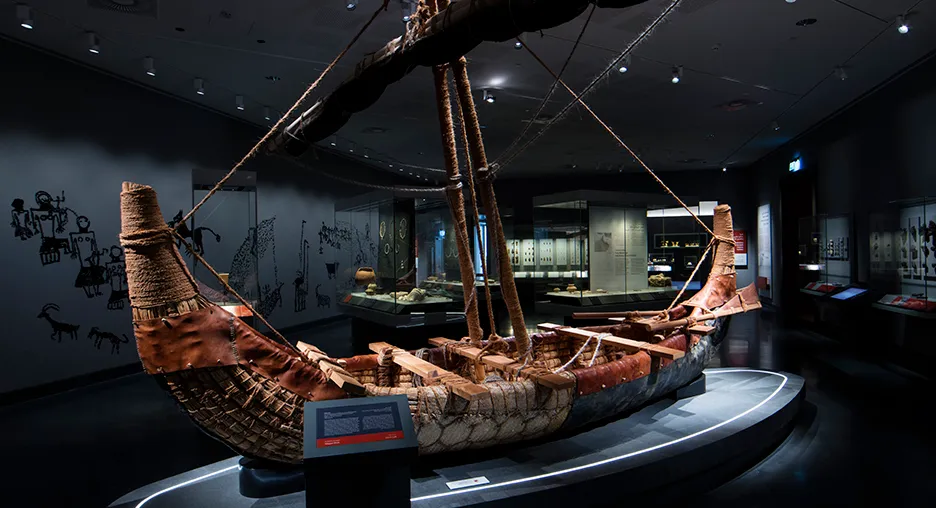.webp)
Long before oil reshaped the Gulf, Oman was prized for something more fragrant: frankincense. From as early as 3000 BC, caravans carried the resin from the Dhofar Mountains across Arabia to Egypt, Mesopotamia, and India. Egyptian temples burned Omani frankincense in sacred rituals, while Roman markets treated it as a luxury more valuable than gold. Its significance stretched even further. Omani frankincense is believed to be mentioned in the Bible. In the Old Testament, frankincense appears in temple rituals, while in the New Testament it is one of the three gifts – alongside gold and myrrh – offered by the Wise Men to the infant Jesus.
By the 7th century, Oman embraced Islam in a way that reflected its own independence of spirit, guided by moderation and tolerance. This distinct path helped shape a national character that was proud, devout, and diplomatically skilled. In these centuries the fortified port of Sohar, once known as the ‘Gateway of China,’ flourished, sending Omani merchants as far as Guangzhou.

The 16th century brought a new chapter: the arrival of the Portuguese. Drawn by Oman’s strategic coastline, they seized Muscat in 1507, building forts to control the trade routes between India and Europe. Yet Omanis were not passive subjects. By the mid-1600s, the powerful Al-Ya’aruba dynasty rose, expelling the Portuguese and turning Muscat into the seat of a new Arab naval empire. The striking Al-Jalali and Al-Mirani forts still tower over Muscat’s harbor, reminders of the era when cannon fire echoed across the Gulf.
By the 17th and 18th centuries, Oman was no longer just a survivor – it was an empire. Omani fleets dominated the Indian Ocean, and their reach stretched deep into East Africa. When Sultan Said bin Sultan moved his court from Muscat to Zanzibar in the 1830s, the island became the empire’s beating heart – a cosmopolitan hub for cloves, ivory, and global trade.
The Omani legacy in Zanzibar is still visible today. Stone Town, with its labyrinth of alleys and intricately carved wooden doors, reflects the grandeur of an Arab-African capital. The Old Fort, built by the Omanis after expelling the Portuguese, still guards the seafront. The House of Wonders and the Sultan’s Palace – once royal residences of the Omani dynasty – stand as reminders of a time when Muscat and Zanzibar were one empire, straddling continents.
.webp)
On the Kenyan coast, Omani influence left a lasting imprint. Fort Jesus in Mombasa, today a UNESCO World Heritage site, became a vital Omani stronghold after the Portuguese were driven out in 1698. Beyond its stone battlements, the winding streets of Old Town Mombasa – lined with Swahili houses and centuries-old mosques – still reflect the seamless blend of Omani and African traditions.
Back in Oman, grand forts like Nizwa and Bahla – the latter also recognized by UNESCO – guarded caravan routes and showcased the wealth of the empire. Their massive round towers and intricate defenses remain some of the most striking monuments in Arabia.
The 19th century saw both glory and strain, for maintaining far-flung dominions proved costly. European colonial powers encroached, and by the early 20th century, Oman’s overseas empire had faded. But the country’s renaissance began in 1970, when Sultan Qaboos bin Said took the throne. Modern infrastructure, education, and a clever foreign policy reshaped Oman into the stable, culturally rich nation of the 21st century.
Today, when you stand on the ramparts of Bahla Fort, gaze across the monsoon-green hills of Salalah, or watch the dhows sail out of Muttrah harbor, you are looking at more than landscapes. You are witnessing the living memory of an empire that once ruled the waves and connected the Gulf to Africa, Asia, and beyond.
.webp)

.png)
.png)
.png)
.png)
